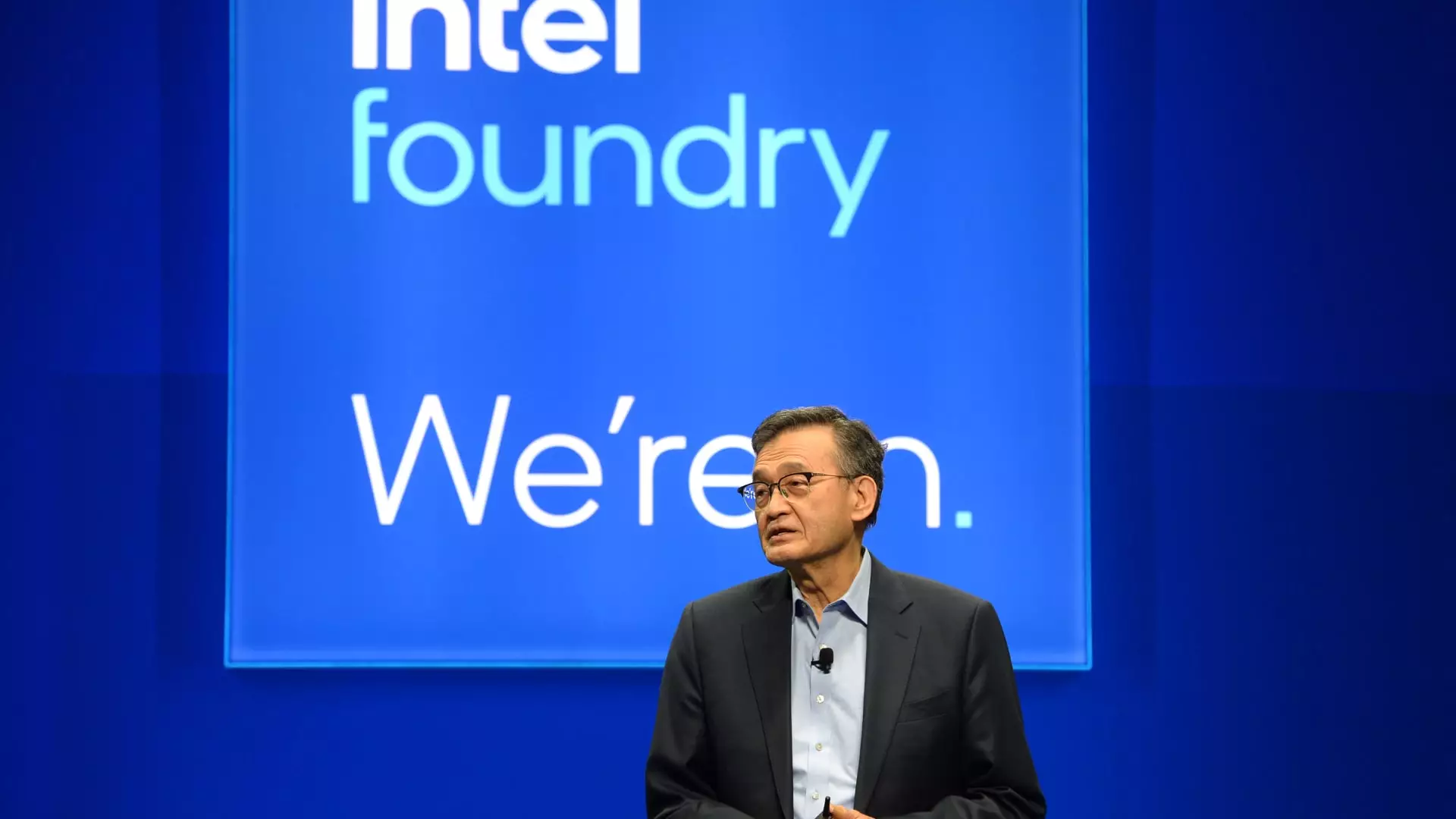In the tumultuous landscape of semiconductor technology, Intel’s recent revelations underscore an industry in flux. The company’s stock plummeted by 9%, revealing investors’ underlying skepticism about its future trajectory despite a slightly brighter earnings report. The core issue at play isn’t merely one quarter’s performance; it’s a reflection of deeper strategic vulnerabilities that threaten Intel’s standing. The company’s decision to cut its foundry costs signifies a recognition that previous investments might have been misguided or too aggressive, especially considering the substantial underutilization of existing facilities. This acknowledgment, however, comes amid a backdrop of mounting losses, a waning market share, and a failure to secure meaningful external customers—particularly in the fiercely competitive AI domain.
What’s truly striking is how the company’s fiscal results defy the negative sentiment surrounding the stock. Intel posted better-than-anticipated revenues and delivered a sales forecast for Q3 that surpassed Wall Street expectations. This contrast highlights an essential truth in corporate analysis: financials are only part of the story. The underlying strategic decisions, or their missteps, often determine whether a company’s apparent short-term resilience can sustain long-term growth.
The Foundry Dilemma: Strategic Misalignment or Missed Opportunities?
At the heart of Intel’s struggles is its ambitious but increasingly questionable foray into the foundry business—a segment that is supposed to propel the company into the future of chip manufacturing. The recent SEC filing that hints at potentially “pausing or discontinuing” the foundry venture marks a noteworthy pivot. It exposes a sobering reality: Intel has failed to attract external clients to its advanced process nodes, including the upcoming 14A technology.
This inability to secure external business partners—despite substantial investments—casts doubt on the viability of Intel’s foundry model. The company’s emphasis on “customer commitments” as a prerequisite for further development signals a shift from open-ended ambition to cautious pragmatism. Such a move might be viewed as a wise recalibration, yet it raises questions: Is Intel retreating from the idea of becoming a major player in the global foundry market? Or is this a strategic pause to rebuild credibility and realign its technology offerings with market realities?
The fallout from these decisions extends beyond immediate financial repercussions. The absence of significant external clients diminishes the appeal and practicality of Intel’s cutting-edge manufacturing nodes, putting its entire innovation pipeline at risk. For a company that has historically thrived on technological leadership, this strategic retreat could be a warning sign of deeper struggles in execution and market positioning.
Restructuring Amidst Deep Uncertainty
CEO Lip-Bu Tan’s candid admission that his early months faced obstacles reveals a leadership vulnerable to the weight of unmet expectations. His acknowledgment of “investing too much, too soon” and a fragmented factory footprint underscores a broader misjudgment—one that resulted in underutilized assets and heightened operational costs. The decision to cut jobs by 15%, eliminating 75,000 jobs by year’s end, signals a painful but perhaps necessary effort to streamline the company’s costs and focus on core competencies.
Financially, the picture remains bleak—net losses widened significantly, and an $800 million impairment charge emphasizes a reckoning with past overreach. The company’s decision to curtail production at its Ohio plant and exit facilities in Germany and Poland showcases a tangible shift toward tightening operational focus. Yet, these moves are symptomatic of a company desperately trying to regain its footing amid an industry where rapid innovation, strong customer relationships, and strategic clarity are paramount.
It’s important to recognize that Intel’s strategic options are now constrained by external realities. The AI market, primarily dominated by Nvidia, continues to elude Intel’s grasp; its technologies have yet to carve out a substantial share of this lucrative sector. This limited success in future-facing markets starkly contrasts with the company’s past dominance and leaves its long-term prospects hanging in a delicate balance.
Is the Glass Half Full or Half Empty?
While many will focus on the gloomy news—the decline in stock value, missed opportunities, and strategic setbacks—it’s worth considering whether Intel’s current stance might actually be a foundation for future resilience. A company that recognizes its pitfalls and adjusts its course with transparency and decisiveness can eventually emerge stronger. The decision to halt unviable projects and focus on securing genuine customer commitments could prevent further dilution of resources and help restore some stakeholder confidence.
However, optimism must be tempered with realism. The company’s strained market position, compounded by internal inefficiencies, suggests that a swift turnaround isn’t guaranteed. Intel’s ability to navigate these choppy waters will depend heavily on execution, strategic partnerships, and perhaps most critically, its capacity to innovate at the pace demanded by an increasingly competitive and fast-evolving industry.
Ultimately, Intel’s current predicament is a stark reminder that even titans can stumble when they misstep strategically or overreach prematurely. Its story is far from over, but its recent decisions signal a company in the midst of a painful but potentially transformative recalibration—if only it can rally its resources and regain its technological edge quickly enough.

